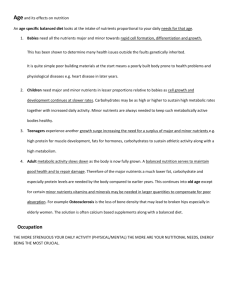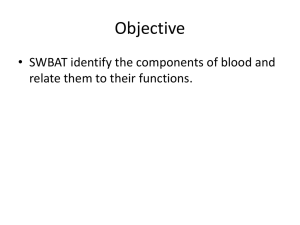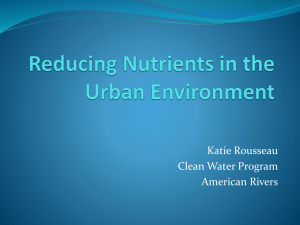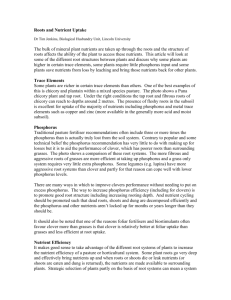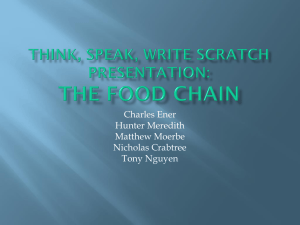1% Nutrients removal
advertisement
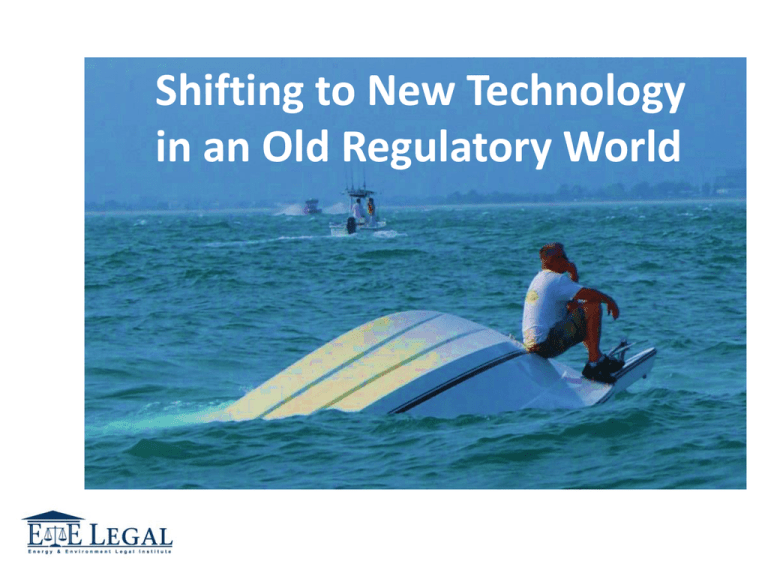
Shifting to New Technology in an Old Regulatory World Two Controlling Factors in Technology Advance The S-Curve Phenomena The Scientific Hubris Conundrum The S-Curve Waste Water Treatment Technology Advance Primary Treatment Removal Efficiency 90-95% settleable solids 40-60% suspended solids 30-40% Biological Oxygen Demand 18% Nutrients removal Secondary Treatment Removal Efficiency 70% Biological Oxygen Demand 75% Chemical Oxygen Demand 1% Nutrients removal Tertiary Treatment Removal Efficiency 30 – 75% Nutrients removal Massively Expensive Difficult to operate Cost-Efficient Alternatives to Tertiary Treatment Will require Reassessment of the Pollution Control Mentality EPA Standards reflect a static assumption about “Assimilative Capacity” It is possible to increase assimilative capacity Shift to a Diatom Ecology Blooms Dead Zone Blue-Green Nutrients Oxygen released Death Oxygen consumed Diatoms Zooplankton What nutrients do algae need? Blue-Green Nitrogen Phosphorus Diatoms Nitrogen Phosphorus Silicon Iron Others The Alternative to Tertiary Treatment July 31, 1980 “Rather than considering treatment procedures which remove the nutrients nitrogen and phosphorus from a sewage discharge one might consider the addition, if feasible, of silica in quantity at the discharge site to alter the receiving waters to a diatom population and a consequent fertile and productive region.” To Accomplish a Paradigm Shift to a New Technology Research, test and demand use of the new paradigm Contact Information: David W. Schnare, Esq. Ph.D. General Counsel Energy & Environment Legal Institute 722 12th St. NW (4th Floor) Washington, D.C. 20005 www.eelegal.org Schnare@eelegal.org 571-243-7975


